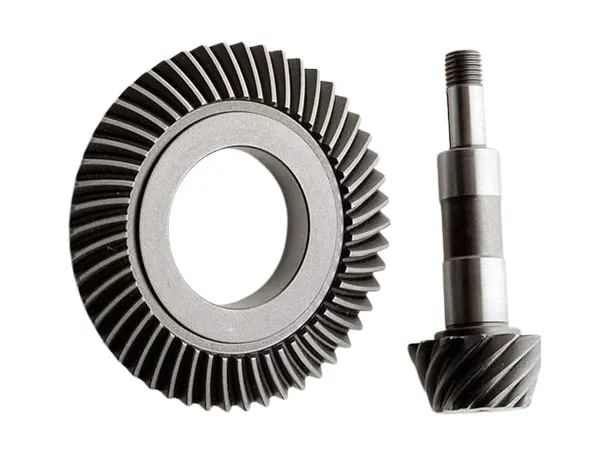- +86 13837949030 +86 15890619536
- info@lymcbearings.com export@lymcbearings.com
- Luoxin Industrial Cluster, Luoyang City,Henan Province,China

Screw gears provide a practical solution for transmitting motion between non-parallel and non-intersecting shafts, especially in compact and low-load applications. While they offer smooth and quiet operation, they come with limitations in terms of efficiency and load capacity, making them suitable for specific use cases where these factors are not critical. The screw-like component of the gear system, which has a helical thread similar to a screw. It meshes with a gear wheel called the worm wheel. The gear that meshes with the worm gear. It has teeth designed to engage with the helical threads of the worm gear.
Screw gears, also known as crossed helical gears, are a type of non-parallel and non-intersecting helical gear set that can transmit motion and power between two shafts that are neither parallel nor perpendicular to each other. Unlike spur or helical gears with parallel shafts, screw gears have helical teeth that engage at an angle, allowing for a compact design that can change the direction of force transmission.
Helical Teeth: Screw gears have helical teeth cut on a cylindrical surface, similar to helical gears, but the shafts are neither parallel nor intersecting.
Non-Intersecting Shafts: The shafts of screw gears are positioned at an angle (typically 45 degrees), allowing for smooth and quiet operation when transmitting power between non-parallel shafts.
Low Load Capacity: Screw gears are generally not designed for high-load applications. They are more suitable for low-speed and low-torque applications due to the nature of their engagement, which can generate thrust forces.
Right-Hand and Left-Hand Helix: Screw gears come in both right-hand and left-hand versions, and a pair must consist of one right-hand and one left-hand screw gear to mesh properly.
Screw gears work similarly to helical gears, but the axes of the shafts are crossed rather than parallel. The helical angle of the gears is chosen to match the shaft angle, allowing the teeth to engage smoothly. The gears slide over each other as they mesh, which requires good lubrication to reduce friction and wear. This sliding action, however, limits the efficiency and load-carrying capacity of screw gears compared to other gear types.
Advantages of Screw Gears
Compact Design: Screw gears allow for a compact arrangement where space constraints make it impractical to use bevel gears or other types of gear systems.
Smooth and Quiet Operation: The gradual engagement of helical teeth allows for smoother and quieter operation compared to spur gears.
Versatile Shaft Orientation: Screw gears can transmit motion between shafts set at various angles, making them flexible for unique design configurations.
Low Efficiency: The sliding contact between the teeth leads to more friction and wear, making screw gears less efficient than other types like spur or helical gears.
Low Load Capacity: Due to the sliding action and thrust forces, screw gears are generally not suited for transmitting high torque or loads.
High Wear and Tear: The sliding contact also results in higher wear and tear, requiring regular maintenance and proper lubrication.
Small Mechanical Devices: Used in small mechanical devices and instruments where low torque and compact design are needed.
Light Duty Machines: Used in machines that require power transmission at an angle but are not subjected to high loads or speeds.
Precision Equipment: Found in measuring devices, textile machinery, and other light-duty applications requiring precise movement at specific angles.
Helix Angle and Shaft Angle: The helix angle of the screw gears must match the shaft angle to ensure smooth engagement.
Material and Lubrication: Proper material selection and lubrication are crucial to minimize wear and friction due to the sliding contact between the teeth.
Load and Speed Limits: Given the low load-carrying capacity, screw gears should be used in applications with low speeds and light loads to avoid rapid wear.